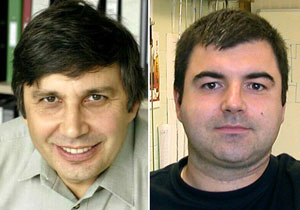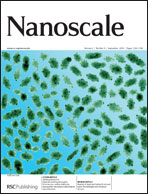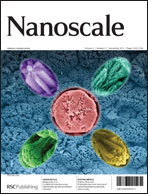Nanoscale’s new Publishing Editor Philip Howes, talks about a recent article on conjugated polymer nanoparticles published in the journal…
This month, a Nanoscale Feature Article presents a very interesting account of recent investigations into a novel type of fluorescent nanoparticles.
Read the Feature Article now for free:
Amplified energy transfer in conjugated polymer nanoparticle tags and sensors
Zhiyuan Tian, Jiangbo Yu, Changfeng Wu, Craig Szymanski and Jason McNeill
Nanoscale, 2010, 2, 1999-2011
Conjugated polymers are a fascinating class of material which combine the electrical behaviour of metals with the ease of processing of plastics. These organic molecules exhibit semiconducting behaviour as they possess a band structure similar to traditional inorganic semiconductors, like silicon, which allows the formation of excitons. For this reason, conjugated polymers are being used for the production of optoelectronic devices, such as LEDs and photovoltaics.
However, the use of conjugated polymers is not confined to device applications. As the polymers exhibit extremely high fluorescence brightness under UV excitation, they have been used to make fluorescent nanoparticles for use in biological imaging. The physical properties of conjugated polymer nanoparticles compare very well with the best known alternatives, such as quantum dots or dye-doped silica, and as they are relatively benign they appear to be promising for uses in biological fluorescence imaging studies where nanoparticle toxicity may be a concern. Furthermore, tuning of the colour of these nanoparticles is easily achieved by changing the type of polymer used, and as there is a vast range of conjugated polymers commercially available, emission across the visible spectrum is easily obtainable.
In this Feature Article, the authors review recent investigations into conjugated polymer nanoparticles with particular reference to optical and energy transfer phenomena, and applications in fluorescence based imaging and sensing applications. The underlying science of how fluorescent conjugated polymers behave in nanoparticle form is both fascinating and complex, and this is dealt with extremely well in this paper. As the authors explain, the development of conjugated polymer nanoparticles is still in its infancy and some important advances need to be made, such as reliable encapsulation and bioconjugation. However, the paper lays out many positive arguments as to why this type of particle should have a bright future in the development of fluorescent nanoparticles for biological imaging studies.
Philip Howes
Publishing Editor, Nanoscale













 Cover Article
Cover Article





